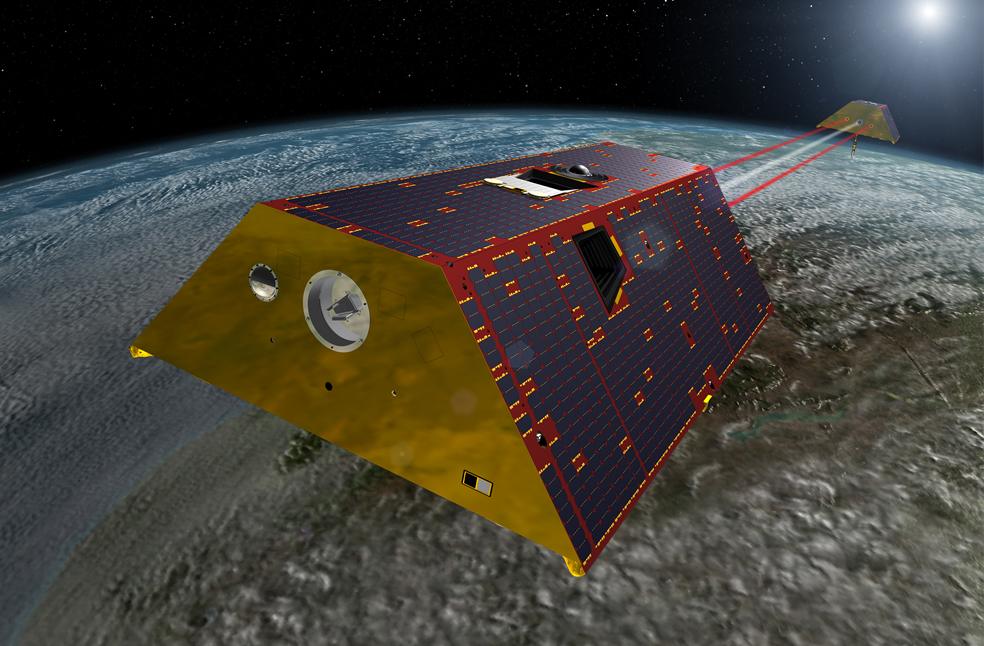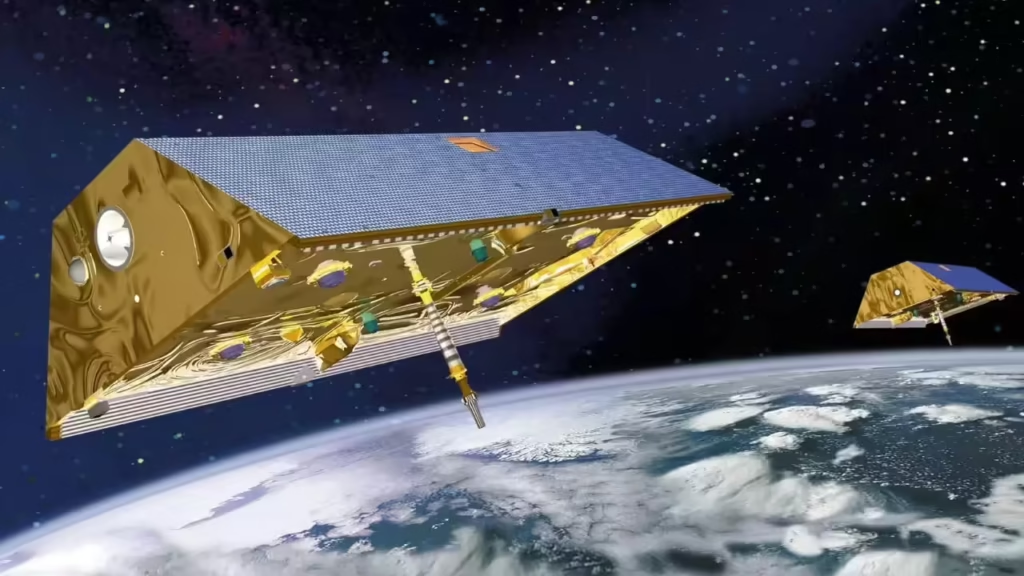Geological shift near Earth’s core is a discovery that has captivated scientists and researchers worldwide. Deep beneath the Earth’s surface, in the mysterious layers that most of us rarely consider, a dynamic change is occurring—one that may reshape our understanding of the planet’s inner workings. This geological shift is not just a minor fluctuation; it involves massive structures moving slowly but steadily within the Earth’s deep interior, and the implications are far-reaching for Earth’s magnetic field, tectonic activity, and overall planetary dynamics.
Understanding Earth’s Inner Structure
To appreciate the significance of this geological shift near Earth’s core, it is important to understand the structure of the Earth itself. The Earth is made up of several layers, each with unique properties and functions:
- Crust: The thin, outermost layer of the Earth, where humans live and all surface activity occurs. It is made up of solid rock and varies in thickness from about 5 km under oceans to 70 km under mountains.
- Mantle: Beneath the crust lies the mantle, a thick layer extending up to about 2,900 kilometers below the Earth’s surface. The mantle is composed of semi-solid rock that can slowly flow over time, driving the movement of tectonic plates on the crust.
- Outer Core: The outer core is a liquid layer made primarily of iron and nickel. This layer extends from roughly 2,900 km to 5,100 km below the surface and is responsible for generating Earth’s magnetic field through its convective movements.
- Inner Core: At the very center lies the inner core, a solid sphere composed mainly of iron and nickel. Despite the extreme temperatures exceeding 5,000 degrees Celsius, the inner core remains solid due to immense pressure.
One particularly important region in the lower mantle is the D” layer, located just above the outer core. This layer has long fascinated scientists because of its complex and dynamic nature. The D” layer serves as a boundary between the solid mantle and the liquid outer core, and its behavior can influence both the mantle above and the core below.

The Discovery of the Geological Shift
The discovery of a geological shift near Earth’s core is the result of years of careful observation and sophisticated analysis. Scientists studying seismic waves noticed anomalies that suggested something unusual was happening deep within the D” layer. By examining how seismic waves travel through the Earth, researchers detected unexpected variations in wave speeds and directions, signaling a large-scale, slow-moving structure hidden beneath the mantle.
This dense structure, estimated to be comparable in size to the Himalayas, appears to be gradually shifting over time. Unlike earthquakes or volcanic eruptions, which occur near the surface, this movement is subtle and slow, but its scale is enormous. The discovery challenges previous assumptions that the Earth’s deep interior is mostly static over human timescales.

How the Geological Shift Affects Earth’s Magnetic Field
One of the most significant implications of this geological shift near Earth’s core is its potential effect on Earth’s magnetic field. The magnetic field is generated by the movement of liquid iron in the outer core, and any change in the flow patterns of the outer core could have far-reaching consequences.
If the dense structure in the D” layer is indeed influencing the movement of liquid metal above it, this could alter the convective currents that sustain the magnetic field. Scientists believe that even minor variations could lead to changes in the field’s strength or configuration, potentially impacting navigation systems, animal migration, and the shielding of Earth from harmful solar radiation.
Impacts on Plate Tectonics and Volcanic Activity
The mantle is responsible for driving tectonic activity on the Earth’s surface. Convection currents within the mantle slowly move the overlying tectonic plates, leading to the formation of mountains, earthquakes, and volcanoes. The geological shift near Earth’s core could alter these convection currents, indirectly affecting plate movements over long periods.
Such changes may not produce immediate earthquakes or volcanic eruptions, but over centuries, the redistribution of heat and mass in the mantle could shift tectonic dynamics. Regions that were once stable may experience increased seismic activity, while volcanic hotspots could shift or become more active. Understanding these connections could provide crucial insights into the long-term evolution of Earth’s surface.
Heat Transfer and the Planet’s Thermal Balance
Another critical consequence of this geological shift involves the transfer of heat from Earth’s interior to its surface. The D” layer acts as a thermal boundary between the hot, convective outer core and the cooler mantle above. Any change in the properties of this layer can influence how heat is transferred through the Earth.
If the dense structure disrupts the usual flow of heat, it may affect mantle convection patterns, which in turn can modify tectonic activity, volcanic processes, and even the planet’s long-term climate trends. Heat flow from the Earth’s interior also drives the formation of new crust at mid-ocean ridges, meaning that this geological shift could have subtle but lasting effects on the creation and recycling of Earth’s surface materials.

Techniques Used to Detect the Shift
Detecting a geological shift near Earth’s core is no small feat. Scientists rely on a combination of seismic tomography and other advanced geophysical techniques to peer deep into the Earth’s interior. Seismic tomography works like a CT scan for the Earth, analyzing how seismic waves from earthquakes and artificial sources travel through different layers. Variations in wave speed reveal differences in temperature, composition, and density.
By combining these observations with models of Earth’s interior, researchers were able to map the dense structure in the D” layer and track its slow movement. This approach represents a major advancement in geophysical research, allowing scientists to visualize processes that occur thousands of kilometers below the surface.
The Broader Significance of the Discovery
This geological shift near Earth’s core is not just a curiosity for scientists; it has implications for our understanding of the planet as a whole. It highlights the dynamic nature of Earth’s deep interior and suggests that changes at great depths can influence surface phenomena over long periods.
Moreover, this discovery challenges the traditional view of Earth’s core and mantle as mostly stable over human timescales. Instead, it paints a picture of a living, dynamic planet where even the deepest layers are in motion. By studying these processes, scientists can improve models of Earth’s evolution, offering insights into how the planet has changed over millions of years and how it may continue to evolve in the future.
Future Research and Monitoring
The discovery of this geological shift is only the beginning. Ongoing research aims to monitor the movement of the dense structure over time and understand its composition. Scientists hope to determine whether the structure is made of denser iron-rich material, remnants of ancient mantle plumes, or another type of material entirely.
Advanced seismic networks, satellite gravimetry, and computer simulations will play key roles in this research. By integrating multiple data sources, scientists can refine their models of Earth’s interior and predict how such shifts might influence surface processes in the long term.

Implications for Earth’s Evolution
The movement of massive structures near Earth’s core could also offer clues about the planet’s history. By studying these deep processes, researchers may learn more about how the core formed, how heat is transferred through the mantle, and how Earth’s magnetic field has evolved over geological time.
Understanding the Earth’s deep interior is essential for grasping the broader processes that shape the planet. From the formation of continents to the rise and fall of mountain ranges, these deep shifts influence the surface in subtle but powerful ways.
Human Curiosity and the Deep Earth
Discoveries like the geological shift near Earth’s core remind us of how much remains unknown about our planet. While humans have mapped the surface of the Earth in detail and explored the oceans, the deep interior remains largely inaccessible. Yet, it is here, in the D” layer and below, that fundamental processes shape the Earth on a planetary scale.
As technology advances, we gain more tools to explore these hidden regions. Each new discovery, such as the movement of dense structures in the core-mantle boundary, brings us closer to understanding the complex and dynamic system we inhabit.
Conclusion
The geological shift near Earth’s core is a groundbreaking discovery that underscores the dynamic nature of our planet. From its potential impact on Earth’s magnetic field to its influence on tectonic activity and heat distribution, this shift has profound implications for understanding the Earth’s past, present, and future.
By continuing to study these deep processes, scientists can uncover the hidden mechanisms that govern the planet’s evolution. The Earth is not a static sphere of rock; it is a living, moving system with mysteries that challenge our imagination and expand our knowledge. The discovery of this shift is a reminder that even the deepest and most inaccessible parts of our world hold secrets that can reshape our understanding of the Earth and its complex inner workings.
The journey to explore Earth’s core and the surrounding mantle is ongoing, and each finding offers a glimpse into the immense forces that have shaped, and continue to shape, the planet we call home. The geological shift near Earth’s core is a profound reminder of the mysteries that lie beneath our feet, waiting to be discovered and understood.
Do follow UAE Stories on Instagram
Read Next – GITEX Global 2025: Discover the Future of AI and Tech Solutions














